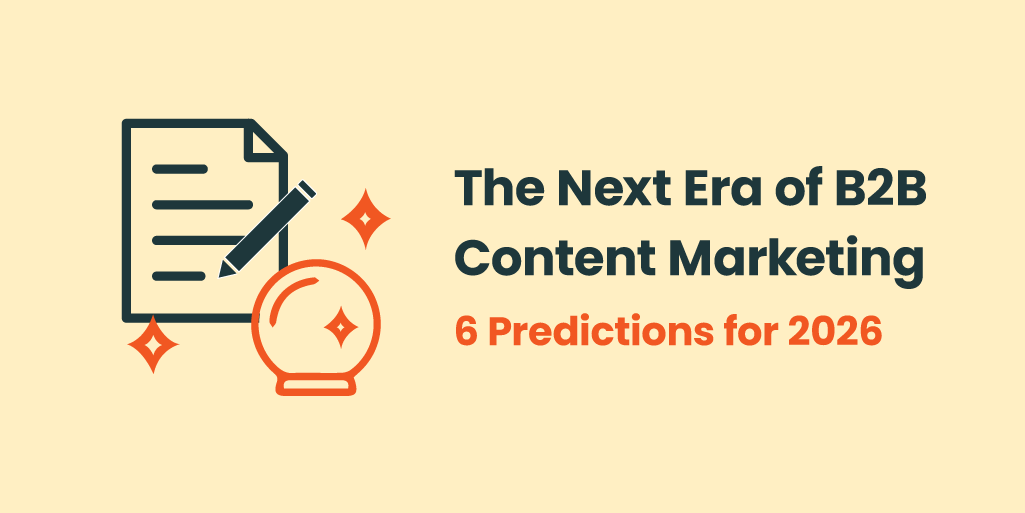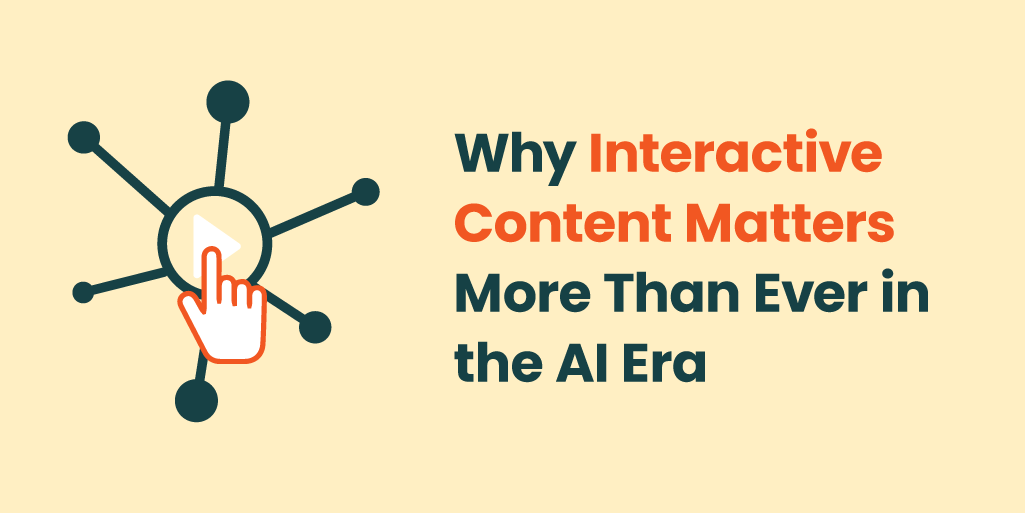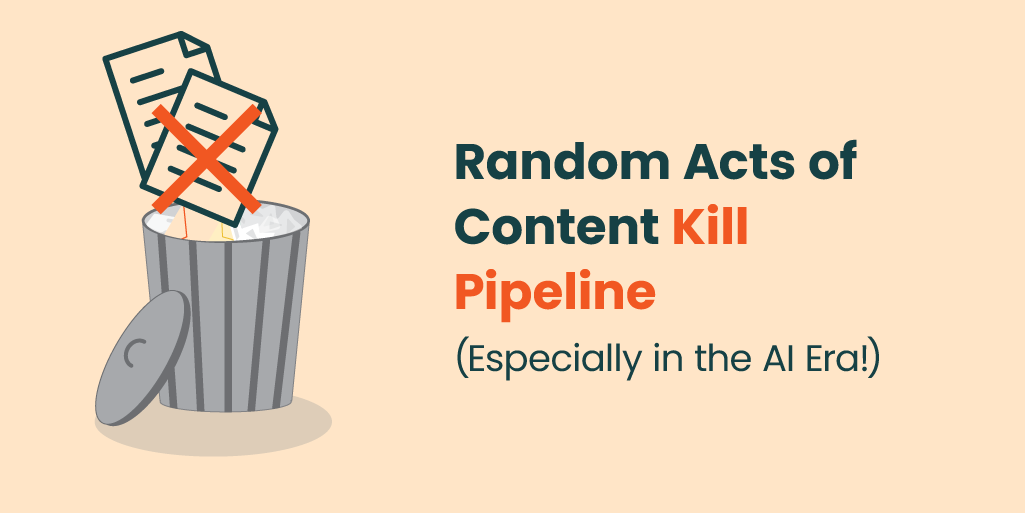2025 brought a flood of AI-generated blog posts, social posts, emails, website pages, and videos. Amid a surge of content for content’s sake, the gap between teams that simply create content and those that create impact has never been wider.
As we look to 2026, the B2B content marketing teams who win won’t necessarily publish the most frequently. They’ll orchestrate content strategically, measure intelligently, and use AI as an enhancer instead of a crutch.
Here’s what B2B content marketers need to know heading into 2026:
1. AI Is the Partner, Not the Ghostwriter
AI platforms are no longer shiny new tools; they’re integral to modern content workflows. But teams that lean on AI for full drafts aren’t seeing better performance. Instead:
- 86% of articles ranking in Google Search were written by humans.
- 82% of the articles cited by ChatGPT and Perplexity were written by humans.
- 54% of long-form LinkedIn posts (those with 100 words or more) are likely AI-generated, and posts flagged as such receive 45% less engagement than those likely written by a human.
In 2026, the difference between average and exceptional AI-enhanced content will come down to how teams collaborate with AI. Treat it like a creative partner sitting beside you, not a ghostwriter behind the curtain. AI should be helping you brainstorm, optimize, and analyze, so you can explore ideas faster, scale without sacrificing brand consistency, and turn data into creative direction.
AI can accelerate the journey, but it still needs a skilled pilot to reach the right destination. A content marketer has to ensure AI’s outputs align with business context, audience nuance, proven best practices, and data learnings. Content marketers won’t use AI to replace their creativity in 2026. They’ll use it to bring even more creative ideas to life faster.
2. Efficiency Is the New Innovation
More B2B tech brands are talking about efficiency as we prepare for 2026. But that doesn’t mean they’re going to stop creating net-new content altogether. Instead, “efficiency” in 2026 will mean getting more from every asset. For example, turn data reports into cross-channel campaigns, align blog narratives with bigger themes, work with your SEO and GEO experts so assets appeal to humans and algorithms, and use your internal platform data to create sales enablement materials.
Random acts of B2B content marketing are an ROI killer. If an asset can’t be mapped to a specific business goal, persona, theme, or buyer journey stage, you shouldn’t create it. And what you do create should be repurposed with precision so that one asset becomes multiple touchpoints. After all, B2B buyers are more self-guided than ever. Give them brand stories that flow across the channels they use and trust.
In 2026, the content marketing teams that thrive will treat their content libraries like living ecosystems, not graveyards of forgotten PDFs.
3. Feed the Funnel With Feedback Loops
The traditional funnel — awareness, consideration, decision — still matters. But in 2026, it will be powered by feedback loops because every piece of content is an opportunity to collect behavioral data that informs the next touchpoint.
Even the smallest B2B content marketing teams should always be on the lookout for interesting engagement findings and new patterns so they can make ongoing optimizations instead of waiting for quarterly performance reviews.
4. Authenticity Outranks Authority
If I had a dime for every time I heard someone mention AI’s sea of sameness in 2025, I’d be living on a megayacht somewhere. In 2026, differentiation will come from voice, tone, and story. Audiences don’t want more “thought leadership.” They want a clear point of view, firsthand learnings, and actionable guidance that helps them do their jobs better. Yet 68% of B2B buyers think that all brands look and sound the same. Breaking through the noise will earn attention, trust, and a spot on the shortlist.
5. Personalization Gets Real (and Realistic)
For years, “hyper-personalization” was more buzzword than reality, consisting of expensive platforms, endless setup, and minimal payoff. 2026 will be the year personalization becomes achievable. Instead of guessing what will resonate, B2B content marketers can build campaigns grounded in live market signals and proven buyer intent.
Tools like Demandbase, Apollo, Clay, and RB2B are helping content marketers turn audience intelligence, intent data, and behavioral signals into sharper segmentation and smarter decisions. The end result is content that works harder and generates measurable business outcomes.
6. Content Measurement Becomes a Learning Engine
“Data-driven” will take on a new meaning in 2026: combining behavioral metrics, qualitative feedback, and AI-assisted insights to identify why content performs, not just how.
This turns every asset into a learning cycle, building intelligence over time rather than starting from scratch with each new piece. As a result, one of the most valuable metrics in 2026 will be learning velocity: how fast your team can turn insights into better content.
How to Win the B2B Content Marketing Game in 2026
2026 will reward the B2B content marketers who connect creativity, data, and concrete business goals. The brands that win won’t just generate content — they’ll engineer momentum.
At Firebrand, we’ve already seen this shift unfold: treating AI as a partner, optimizing with purpose, and aligning every asset to business strategy consistently outperforms those merely chasing volume.
The next era of content marketing isn’t about producing more. It’s about producing what matters and proving that it does.
About the Author
Nicole Pytel is Vice President of Content Marketing at Firebrand Communications, leads Firebrand's Content Marketing team, and is one of the hosts of Firebrand's podcast FiredUp!
After starting her career as a TV journalist, Nicole has spent the past 15 years driving growth for B2B companies of all sizes, from scrappy startups to the Fortune 25. With deep expertise across brand positioning, go-to-market strategy, content development, and demand generation, Nicole helps tech brands turn breakthrough ideas into compelling, scalable content marketing programs.
Follow Nicole on LinkedIn, listen to her on FiredUp!, or read her insights on Firebrand's B2B tech marketing blog.




